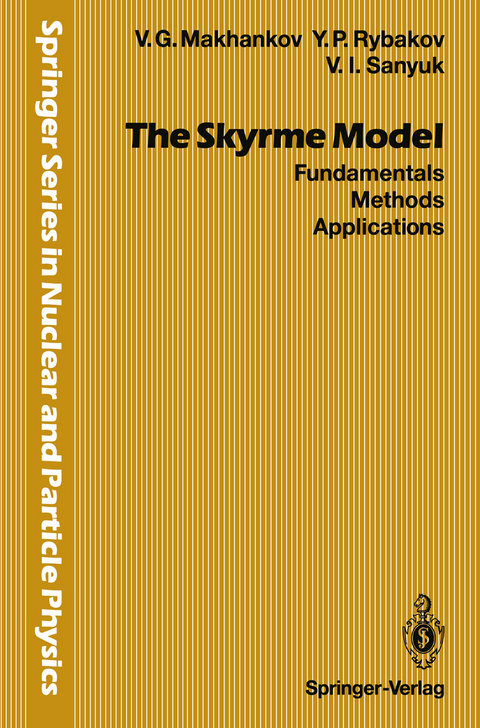
The Skyrme Model
Springer Berlin (Verlag)
978-3-642-84672-4 (ISBN)
The Skyrme Model is the model of hadron matter proposed by the British physicist T.H.R. Skyrme in 1961. It is now regarded the simplest model for an adequate description of hadron structure and interaction. Since no summarizing reference book has been written up to now, researchers in high energy, nuclear and particle physics will find here the first thorough description of this model.
I Fundamentals.- 1. The Evolution of Skyrme's Approach.- 2. Elements of Field Theory with Topological Charges.- 3. Topological Stability.- II Methods for the Study of Skyrmions.- 4. The Principle of Symmetric Criticality.- 5. Absolute Minimum of the Energy Functional.- 6. The Existence of Skyrmions.- 7. Multi-Baryon and Rotating Skyrmion States.- 8. Quantization of Skyrmions.- III Hadron Physics Applications.- 9. The Skyrme Model and QCD.- 10. Skyrmion as a Fermion.- 11. Quantized SU(3) Skyrmions and Their Interactions.- Concluding Remarks.- IV Appendices.- A. Chiral Symmetry.- B. A Concise Account of Algebraic Topology.- C. Methods of Reduction.- D. Proofs of Stability and Existence Theorems.- E. Finkelstein-Williams' Spinor Structures.- References.
| Erscheint lt. Verlag | 2.2.2012 |
|---|---|
| Reihe/Serie | Springer Series in Nuclear and Particle Physics |
| Zusatzinfo | XVIII, 265 p. |
| Verlagsort | Berlin |
| Sprache | englisch |
| Maße | 155 x 235 mm |
| Gewicht | 440 g |
| Themenwelt | Naturwissenschaften ► Physik / Astronomie ► Atom- / Kern- / Molekularphysik |
| Naturwissenschaften ► Physik / Astronomie ► Hochenergiephysik / Teilchenphysik | |
| Naturwissenschaften ► Physik / Astronomie ► Quantenphysik | |
| Naturwissenschaften ► Physik / Astronomie ► Theoretische Physik | |
| Schlagworte | Baryon • Boson • Condensed matter physics • Evolution • Hadron • High Energy Physics • Mathematical Physics • Meson • nuclear physics • paper • Particle physics • skyrmion • Structure |
| ISBN-10 | 3-642-84672-6 / 3642846726 |
| ISBN-13 | 978-3-642-84672-4 / 9783642846724 |
| Zustand | Neuware |
| Informationen gemäß Produktsicherheitsverordnung (GPSR) | |
| Haben Sie eine Frage zum Produkt? |
aus dem Bereich


